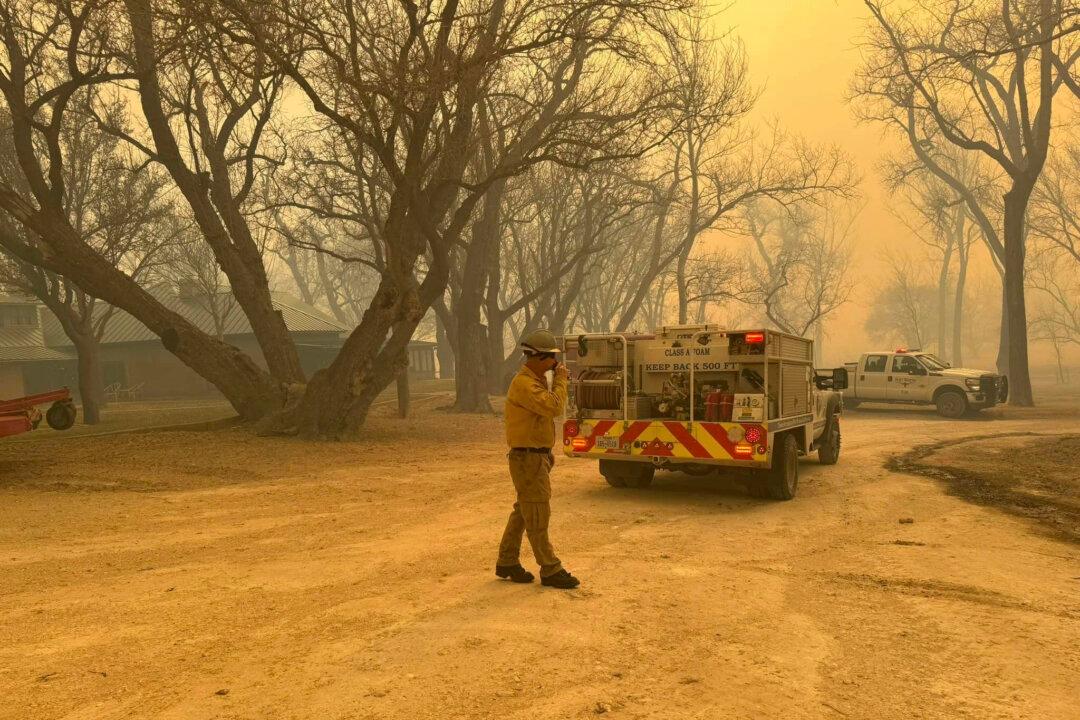Gov. Greg Abbott issued a disaster declaration on Feb. 28 for 60 Texas counties as wildfires continued to sweep across the state’s Panhandle, prompting evacuations, power outages for thousands, and a brief shutdown of a nuclear weapons facility.
Strong winds, dry grass, and unseasonably warm temperatures fed the main blaze, the Smokehouse Creek fire, north of Amarillo. It quickly grew into the second-largest wildfire in the state’s history.





